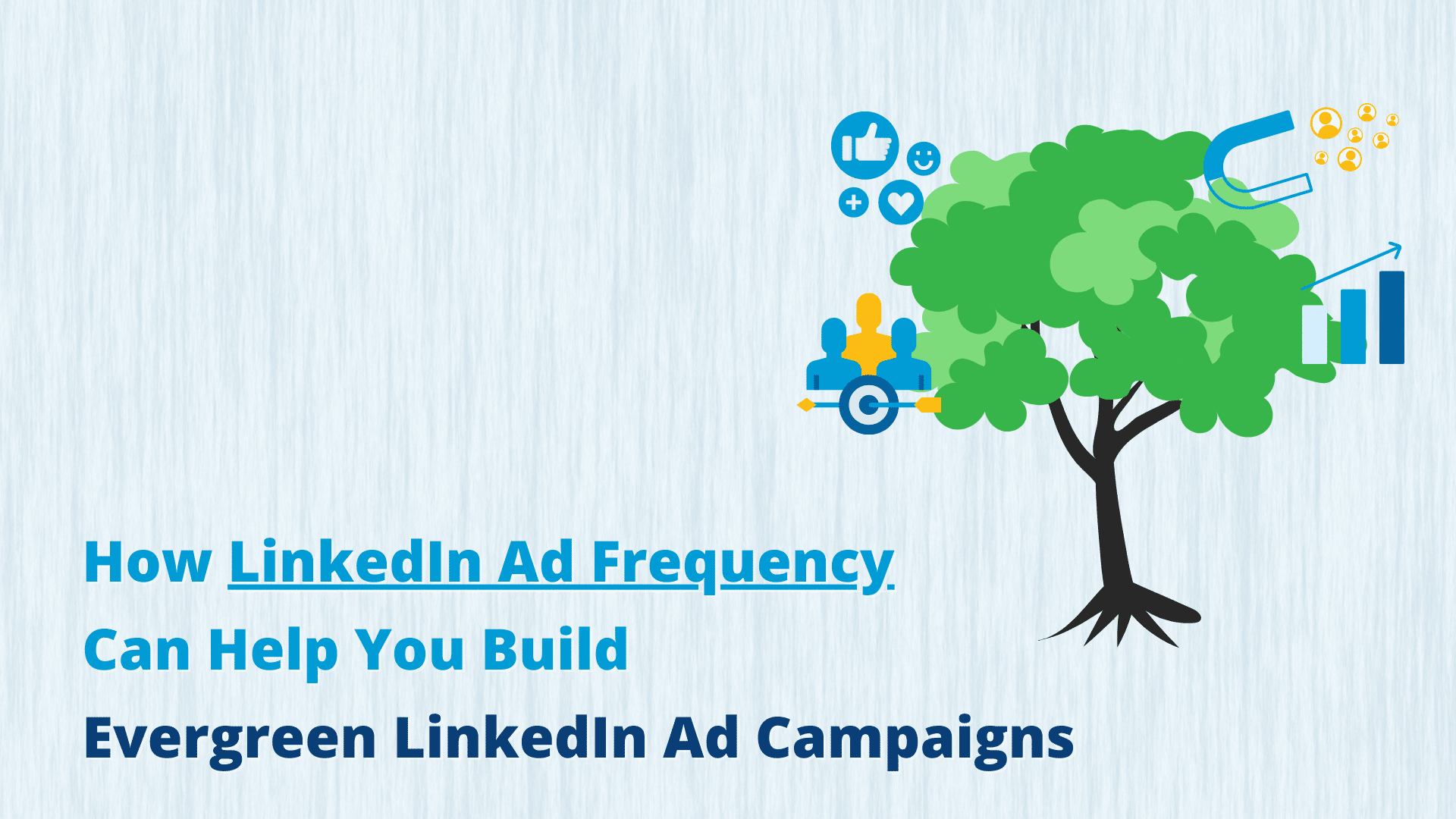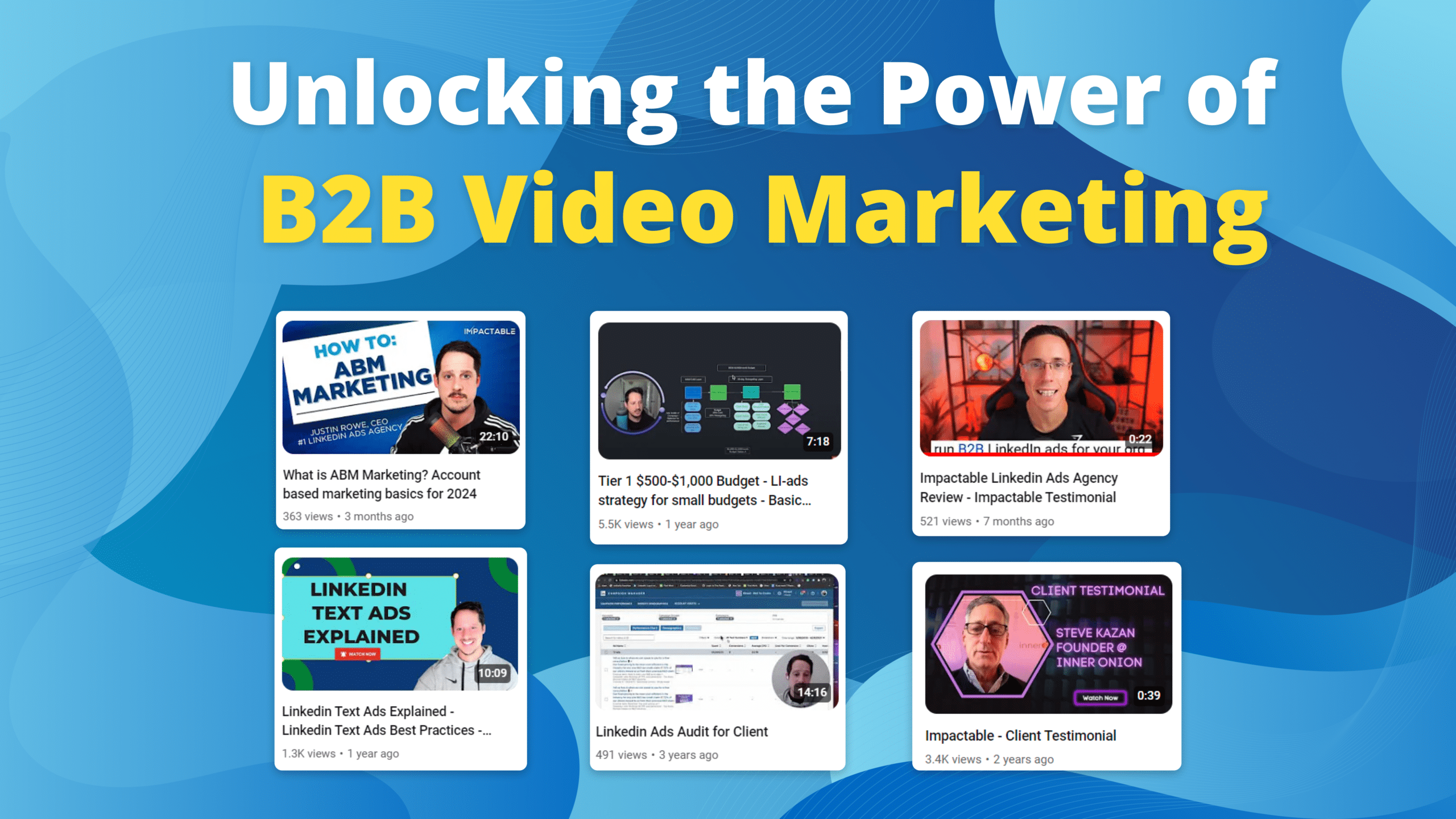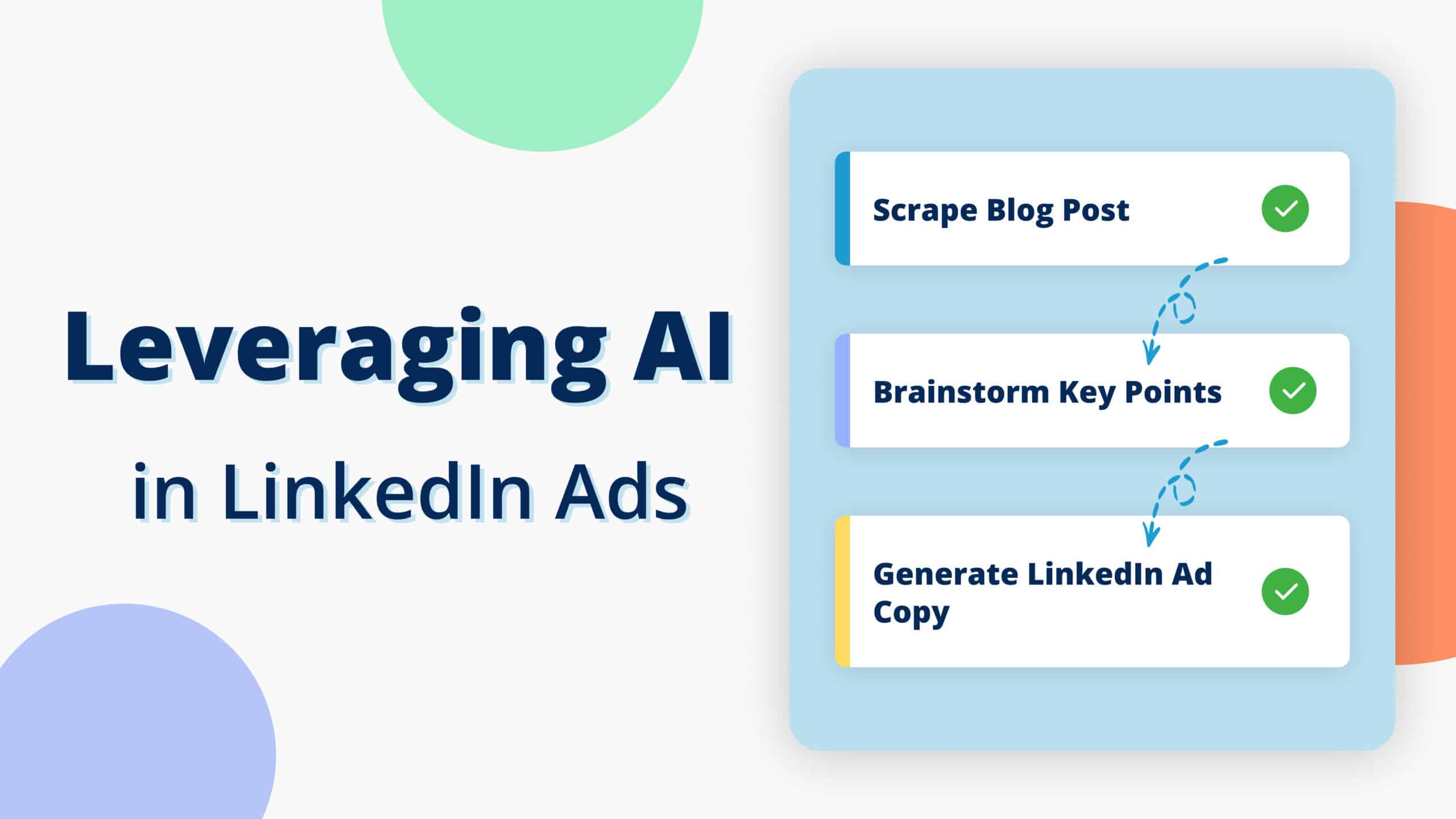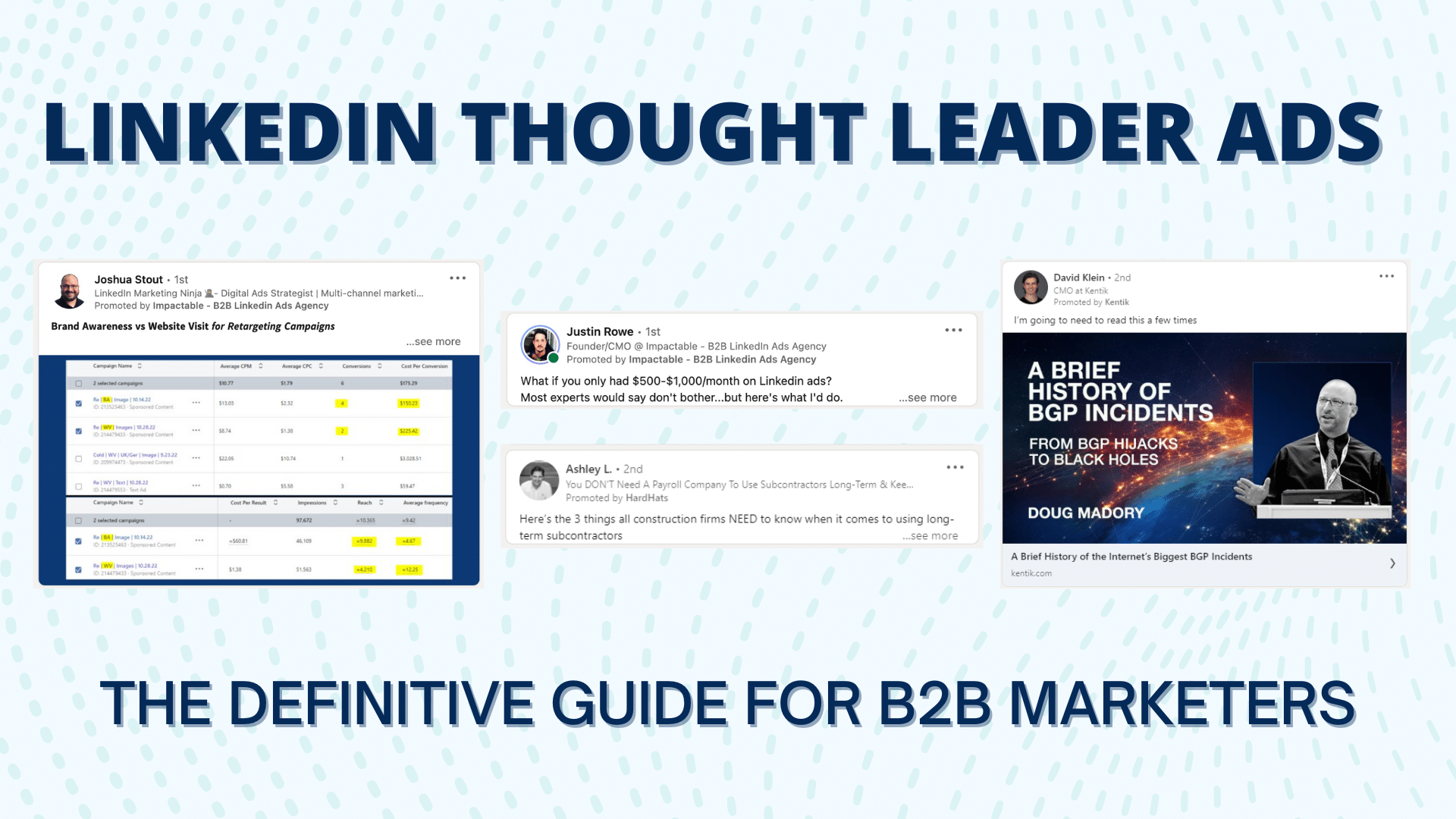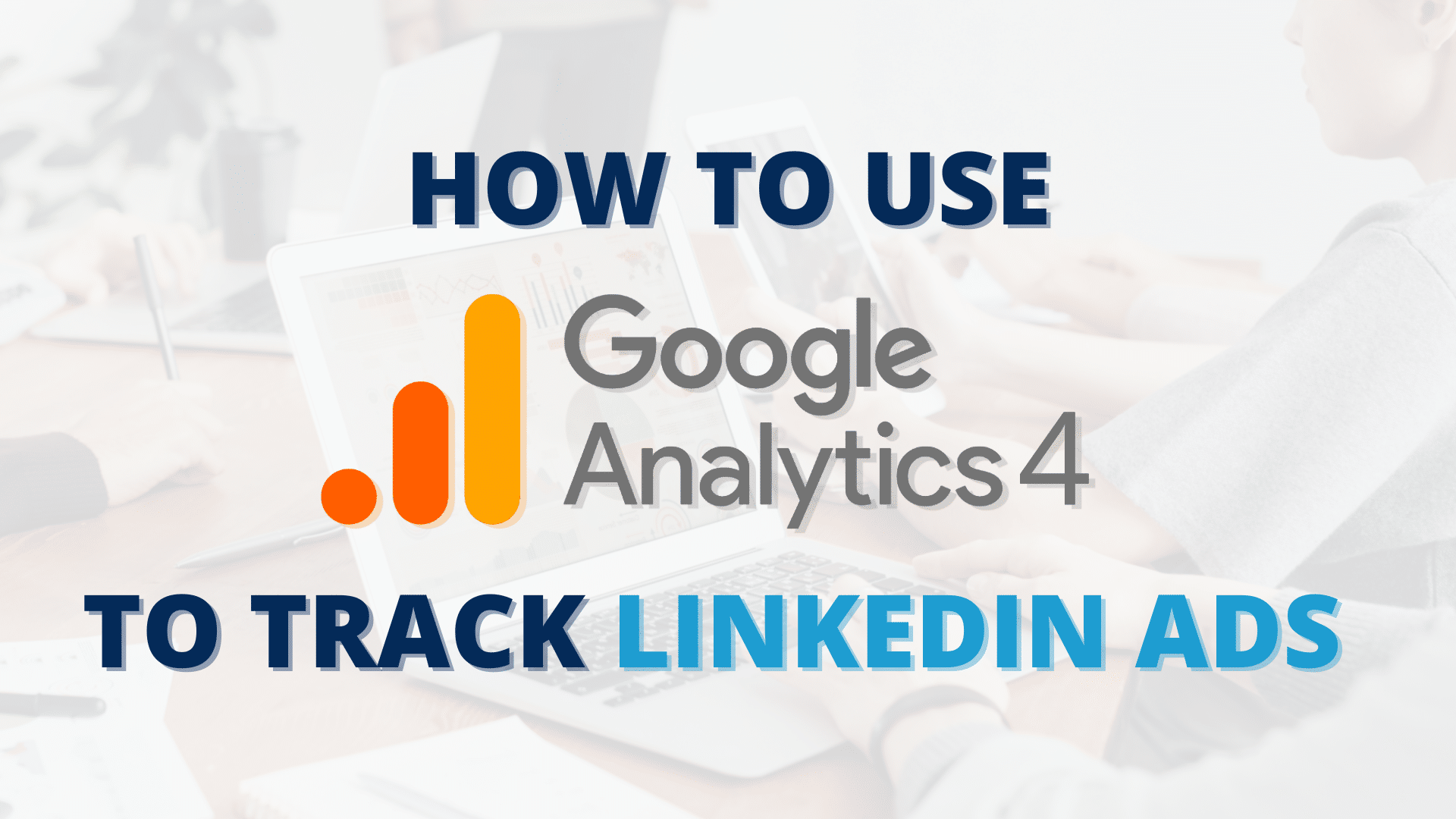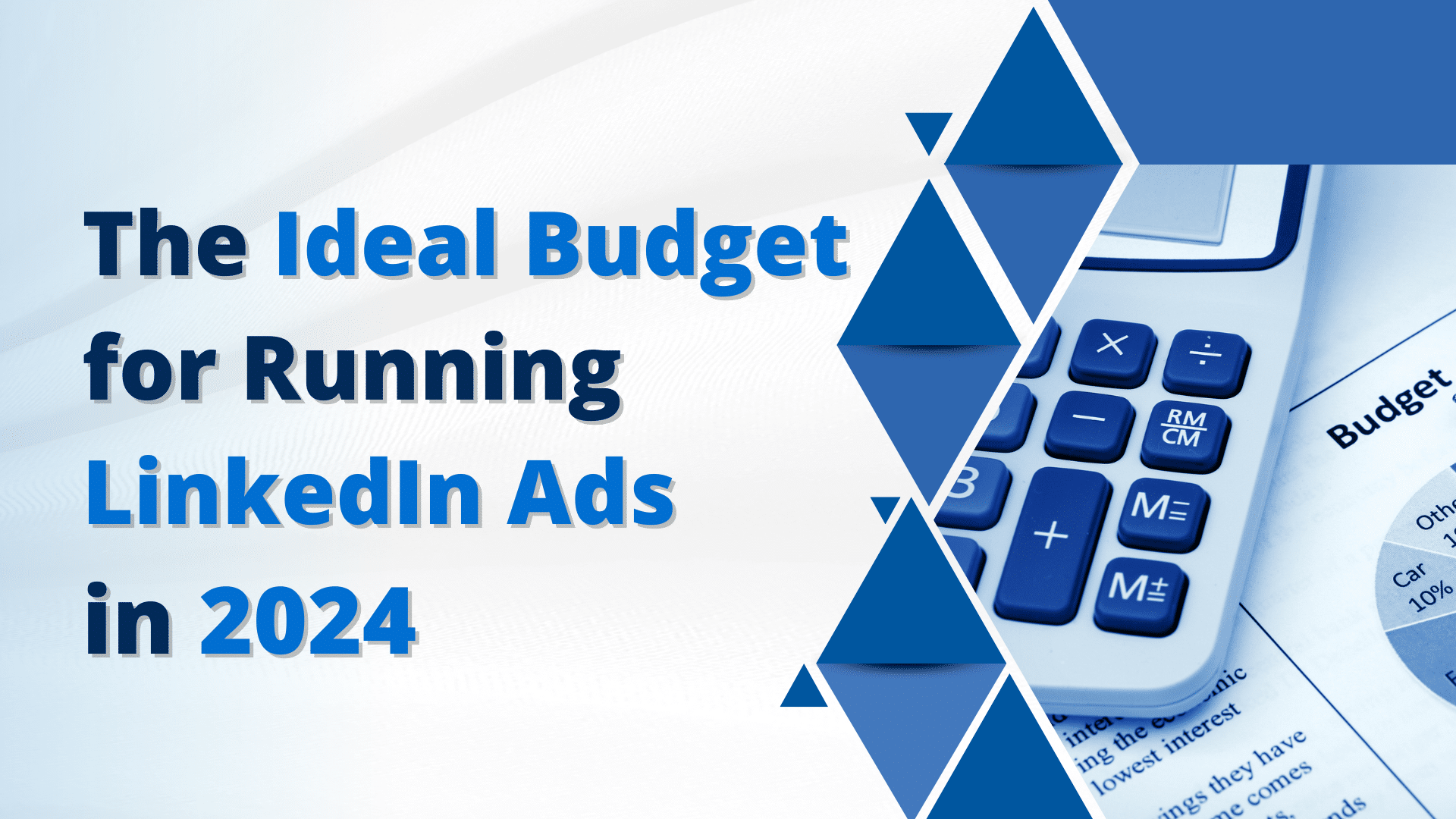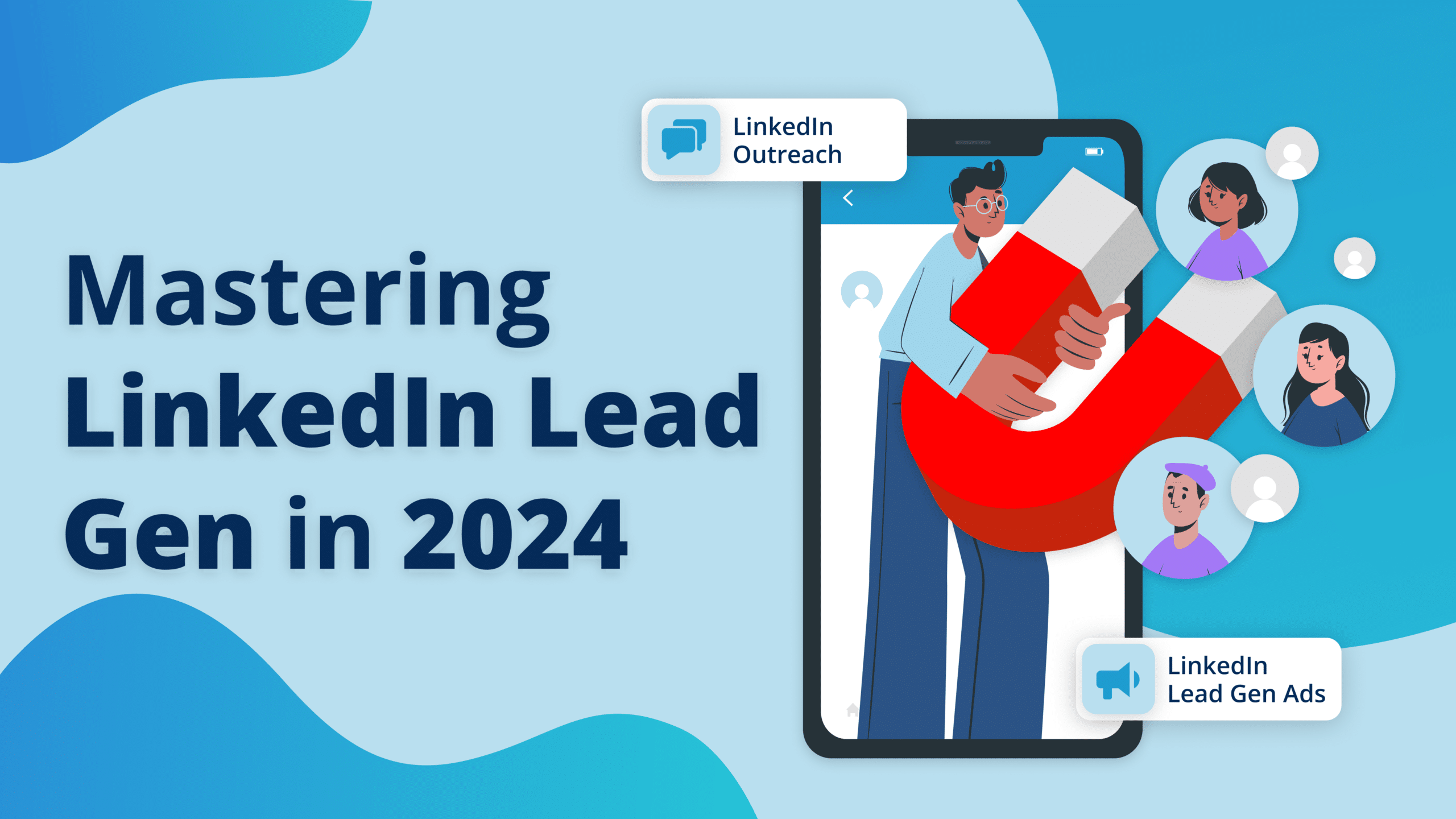For evergreen Linkedin ad campaigns designed to run continuously over an extended period of time, Linkedin ad frequency can help maximize ROI by ensuring that your content is being seen by the right people at the right time and the right number of times.
Most marketers like to follow the ‘rule of seven‘, which suggests that a potential customer is more likely to purchase after interacting with your brand at least seven times across various marketing channels (including paid ads, printed brochures, newsletters, ebooks, infographics, and other types of branded content). It is a good benchmark for understanding the importance of consistent and frequent messaging to build trust and familiarity with your target audience.
This article will delve deeper into why ad frequency matters, how to measure and optimize it, and what pitfalls to avoid. Let’s get started!
LinkedIn Ad Frequency in the Cold Layer and Evergreen Campaign
LinkedIn recommends that, for effective targeting, audience size should fall within the range of 30,000 to 140,000 prospects. If you’re targeting a larger audience (anything above 100,000), prospects likely won’t see all the ads you originally put out, even if you completely overhaul your ad creatives. Therefore, it’s advisable to limit the 90-day frequency to less than three to maximize the impact of each ad while keeping your ad spending in check.
In light of this, constantly introducing fresh creatives may not be prudent since prospects may not have seen the entire suite of original ads. Instead, marketers should optimize frequency and identify top-performing ads to allocate ad spend more efficiently. By doing so, you can achieve better results without wasting time and resources on ads that aren’t performing as well.
Benefit #1: Accumulating Social Proof on LinkedIn Ads
Over time, as an ad accrues more ad spend and remains in constant circulation, it has a greater chance of accumulating likes, comments, and shares. The more engagement an ad receives, the lower its cost per click, the higher its click-through rate, and the more cost-effective its conversions become. This is due to the impact of social proof on audience behavior when people see others engage with an ad, so they are more likely to engage with it themselves.
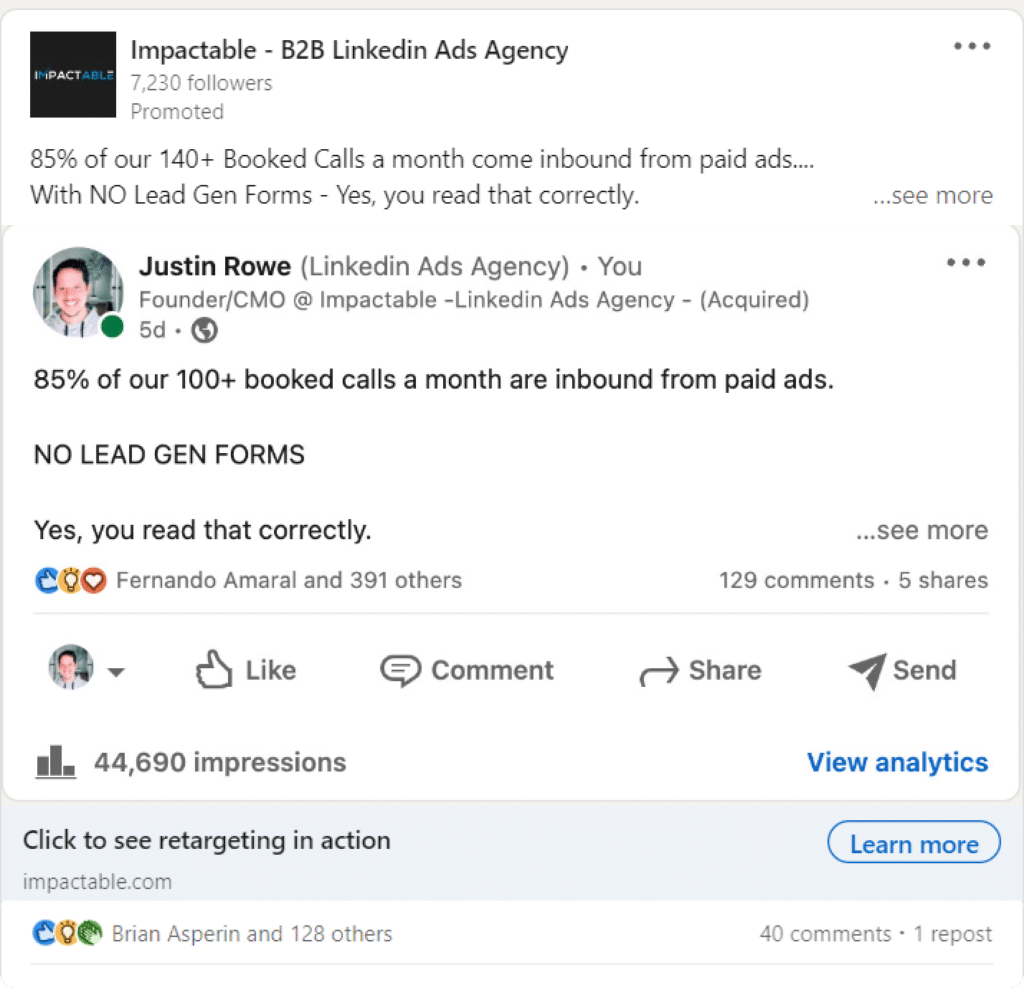
By relying on the basic principles of ad seasoning and social proof in your LinkedIn advertising strategy, you can drive higher engagement, build trust and credibility with your target audience, and increase your company’s bottom line.
Benefit #2: Building for the long-term
Regularly swapping out ads erases your accumulated social proof and forces a restart from zero likes, comments, and shares. This is especially true in the cold layer of audience targeting, where fewer ads are in circulation. In this case, retiring low-performing ads and spending more money on your top-performing ads (as discussed earlier!) is the way to go. The only exception to this rule is when you are targeting a small account-based marketing (ABM) list with 10,000 or fewer individuals. Here, a smaller audience with a larger budget can lead to a high frequency of ad exposure, as both audience size and ad spend impact frequency.
How can you achieve a higher frequency when targeting a smaller audience with a healthy budget in a cold-layer campaign?
Remember, two variables affect frequency—audience size and ad spend. If you introduce a new set of ads each month on top of the previous ones, instead of completely replacing them, you are ensuring that the audience sees a fresh variety of ads. When ads are rotated evenly, the audience will see many different ads throughout their 90-day campaign. This approach allows for ad seasoning, as the accumulated engagement on the ads improves their overall performance metrics. The cold prospects will be exposed to a new interaction experience with your brand every time, rather than constantly seeing the same top-performing ads.
For example, let’s consider that your 90-day frequency is, say, 15 or 20 in the cold layer campaign. You can start with five or six ads and, the next month, introduce a new set without replacing the old ones. Rinse-Repeat the process for the month(s) after. Even distribution of ads will allow them to see 15 or 20 different ads throughout their 90-day campaign.
Allow me to clarify that if you have a 90-day frequency of 20 and set your campaign to optimize for performance, the algorithm would prioritize showing your top-performing five ads four times each to all of your prospects. Your prospects would be repeatedly exposed to the same set of ads, leading to ad fatigue and decreased engagement. This highlights the significance of adopting an evergreen strategy that guarantees a fresh, attention-grabbing, on-brand experience for prospects.

By paying attention to frequency and continuously introducing new ads, marketers can optimize their campaigns for both freshness and performance, ultimately leading to better engagement and conversion rates.
LinkedIn Retargeting (90-Day Campaign): LinkedIn Ad Frequency and Evergreen Campaign
To ensure a fresh and engaging experience for your prospects, it’s important for frequency to match your ads to the 90-day campaign length. For instance, suppose the frequency for your retargeting campaign is 17 over a 90-day period. You should aim to create and include around 17-20 ads in your campaign and distribute them evenly so prospects are exposed to a diverse array of content throughout the campaign duration.
However, a potential drawback of this approach is that if a prospect re-visits the website or company page, they may be re-cued into the same 90-day campaign leading to overexposure to the same ads. This can be avoided by having enough ads in the campaign so that even if a prospect does see some of the same ads again, they won’t become over-saturated with the same few ads. For instance, if you have 20 ads in there, it’s highly unlikely that the audience has seen them all, and even if they have, it’s better than being oversaturated with five or six ads.
Additionally, adopting an even distribution strategy will help minimize the chances of prospects seeing the same ads multiple times.
Retargeting (90-180 Day Campaign): Ad Frequency and Evergreen Campaign
After the initial 90-day retargeting campaign, I usually have most of my ads drop off, specifically the expensive in-feed image ads and video ads. From day 90 to day 180, I switch to light nurture ads such as text ads, spotlight ads, and follower ads, which have a high frequency and many options and variations to play around with. If a prospect goes through 90 days without engaging with any of our ads or visiting our website or company page, they stay in a small nurture campaign for an additional three months. Our logo appears on their desktop and to the right of their feed during this time. If they interact with any of our 90-day retargeting or any of the retargeting ads at all, they get another campaign opened up to them—a 30-day high-intensity, strong call-to-action campaign. If they interact with the retargeting layer, they get hit with this 30-day campaign that really pushes them to book a demo.
This creates an automated, evergreen system that keeps prospects engaged and moving forward in the sales funnel. They start seeing all our ads if they show interest and take action. If they take further action to emphasize their interest, like visiting our website, they get pushed to book a demo. If they make it through all that without interacting, we drop off the intensity and start nurturing them. If they revisit the website or click on one of our nurture ads, they get thrown back into the mix.
In the end, the system operates on autopilot depending on the prospect’s previous actions—they’re either getting hit with all of our ads, or as they move further and further away from that last action, it gets less intense and more nurturing.
What Happens When the Ads Get Outdated?
While it’s true that some of the ads may become outdated over time, I still believe that one of the best parts of an evergreen strategy is how certain ‘seasoned’ ads continue to perform well regardless. If an ad is generating a significant number of leads or sales for your business, it may not be necessary to replace it, even if some aspects of the ad are not completely up-to-date.
For example, I have ads that have received 100 likes, 40 comments, and several shares, and they continue to book calls for us after more than a year. It would be unwise just to turn off these well-performing ads and replace them with new ones. Of course, I will make changes if there are any significant errors or inaccuracies in the ads. However, if there are only minor issues, such as changes in pricing plans, I prefer to leave it be. I trust that visitors will go to our website and see the most current pricing information.
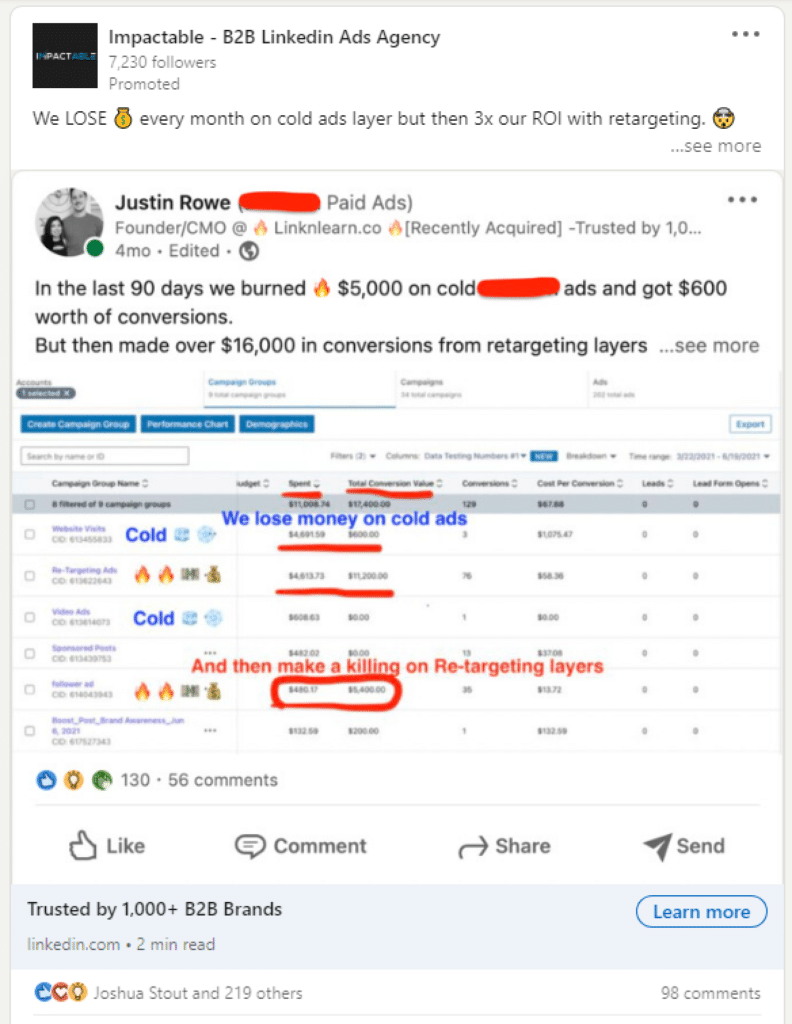
Ultimately, it’s about finding a balance between keeping your ads accurate and current while also capitalizing on the value of seasoned ads that continue to drive positive results for your business.
Is There a Way to Sequence Your Ads?
There isn’t a perfect way to sequence ads, but ad scheduling can be a helpful tool in addressing this issue, particularly on LinkedIn. I recommend having two separate 90-day retargeting campaigns, each with approximately 20 different ad creatives. Then, you can alternate between the two campaigns on different days or weeks. For example, I might turn off Campaign A, turn on Campaign B for a while, and then switch back to Campaign A after a certain amount of time. This helps keep the ads fresh and engaging, even for people who have seen them before. In this scenario, I am essentially creating six months’ worth of fresh content to put in front of your audience while still spending the same amount of money.
Conclusion
Due to the competitive nature of the landscape, I understand that the pressure to stand out is immense, and marketers feel compelled to frequently drop in a new set of ads and get rid of the old ones. I, of course, feel differently, and it’s worked out in favor of our clients. At Impactable, LinkedIn ads are one of our top revenue drivers. Personally, I don’t feel the need to make dramatic changes or introduce new content too often. Sometimes I can go three or four months without any changes because our ads are evergreen and set up on autopilot. I take advantage of even distribution settings to ensure our target audience is seeing fresh content on a day-to-day basis.
I hope this article helps you gain a fresh perspective on LinkedIn ad campaigns and encourages you to focus more on evergreen content. Don’t be afraid to experiment and find what works best for your business needs, and always remember to track relevant performance metrics to improve your ROI.
Have more questions? Book a demo today!

